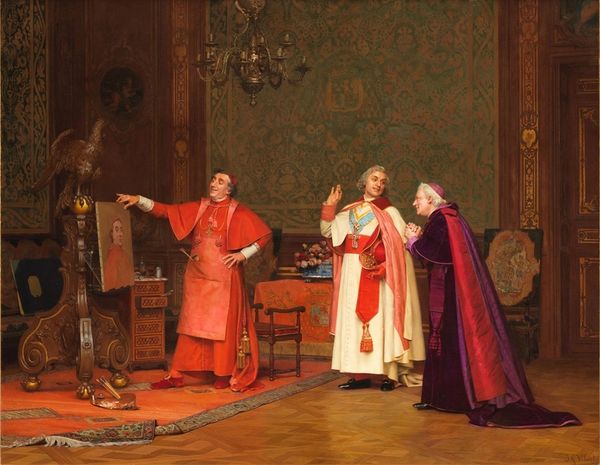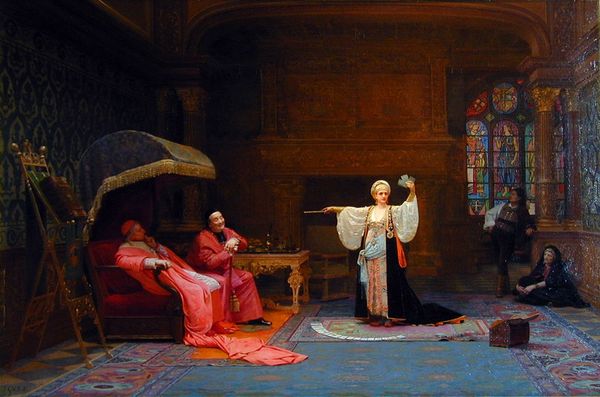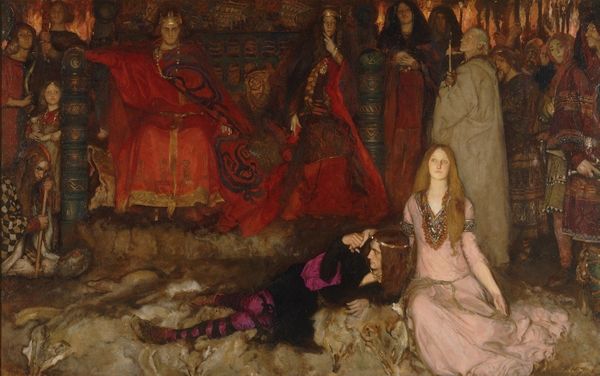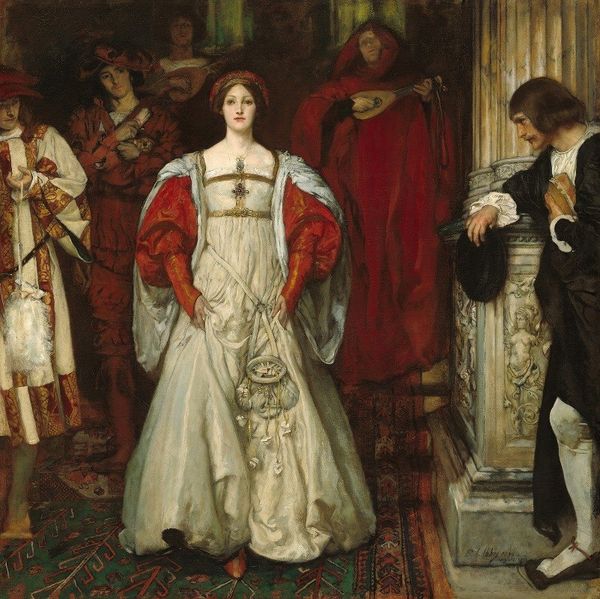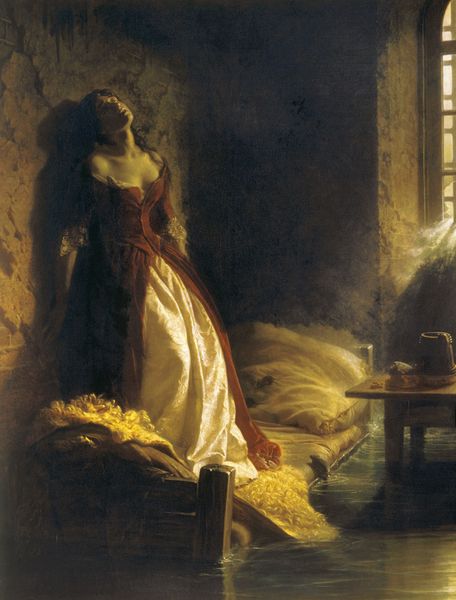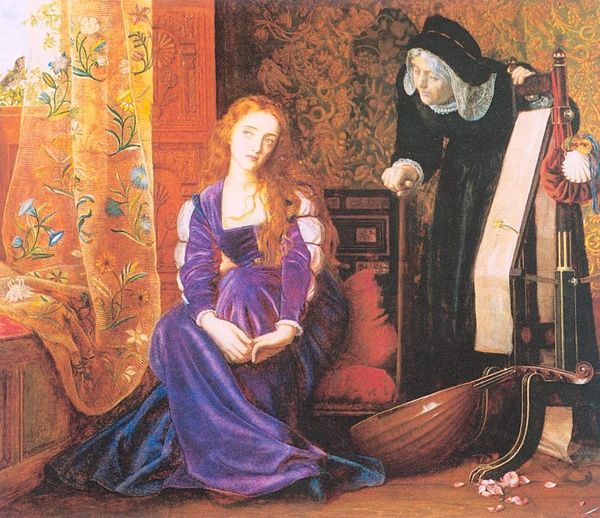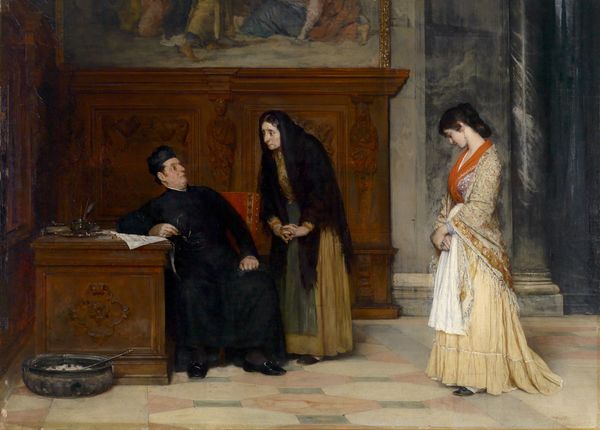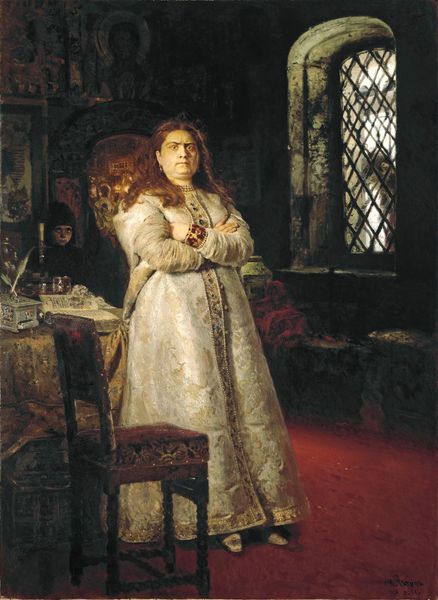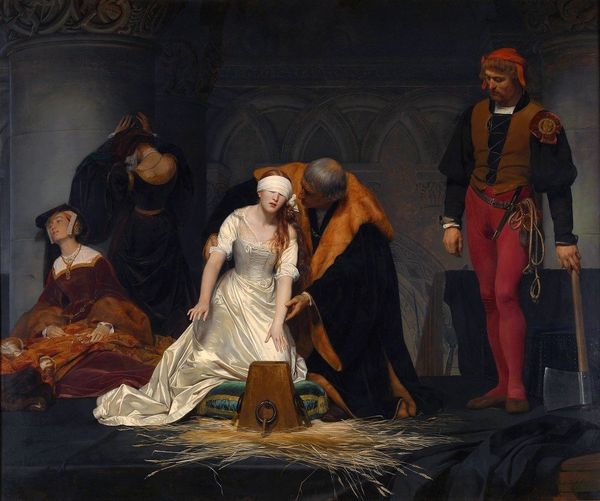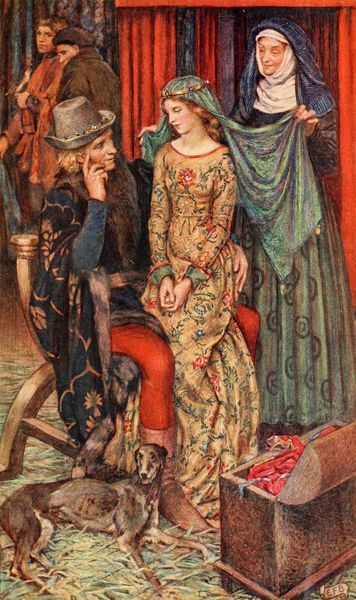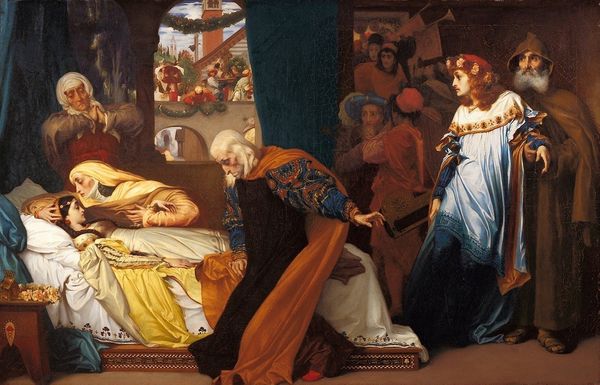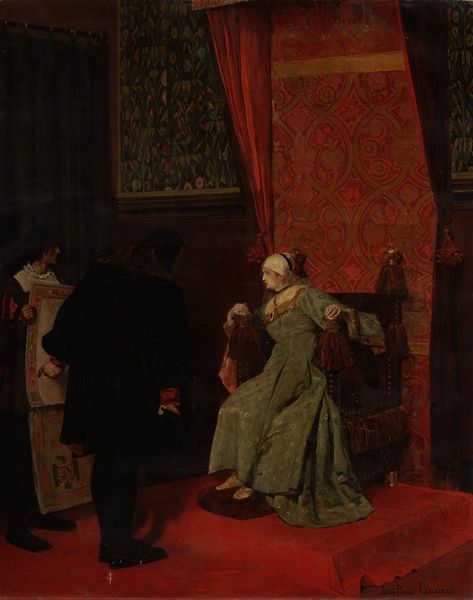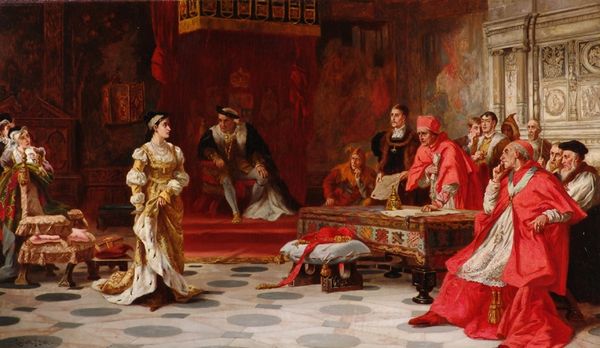
painting, oil-paint
#
portrait
#
painting
#
oil-paint
#
oil painting
#
symbolism
#
history-painting
#
pre-raphaelites
Copyright: Public domain US
Curator: This is Frank Cadogan Cowper's "Fair Rosamund and Eleanor," an oil painting dating back to 1920, placing it squarely within his mature Pre-Raphaelite style. Editor: A tense scene! There’s an almost palpable feeling of dread and suppressed anger radiating from the figures and their garments. Curator: Precisely! The composition divides the canvas vertically, highlighting the spatial and emotional chasm between Rosamund and Eleanor. Note the delicate rendering of Rosamund’s gown, the soft draping folds playing against the sharp, angular lines of Eleanor’s attire. Semiotically, we read innocence versus…vengeance. Editor: Yes, and consider the materiality of their garments; the soft creamy wool and possible silk blend of Rosamund’s robe points to her dependence and fragility, amplified by what looks like a string trap for the Queen, in contrast, Queen Eleanor’s heavy, patterned brocade visually denotes authority and strength. It likely took many people many hours to spin the materials and sew and design each gown. The painting emphasizes class through this labour, too. Curator: The artist employs a sophisticated colour palette as well; the warm, inviting tones surrounding Rosamund—the red curtains, the muted sunlight through the window—contrast starkly with the darker, colder hues associated with Eleanor. Look how Cowper has played with chiaroscuro to define Eleanor’s grim countenance and tightly clenched jaw. Editor: Indeed. The stark lighting emphasizes the materiality of the space, with an intense concentration on textures from woven tapestries to the potential for cold, unforgiving steel about to change Fair Rosamund's fate for good. The gold threading on the royal’s garments adds a sense of decadent power against Rosamund’s chamber with all of its red dye, probably from insect labour. Curator: One could even read the composition as a commentary on the aesthetic principles championed by the Pre-Raphaelites, a deliberate arrangement of visual elements to evoke a particular emotional and intellectual response. Editor: This is fascinating when considered in the context of the labour intensive Pre-Raphaelite style, and how, for the elites in this image, these kinds of intensive works are meant for harm instead of pleasure. The work also brings up how this harm echoes throughout art history for viewers today. Curator: Agreed, a striking portrayal indeed. Editor: A captivating dive into art as material power and consequence.
Comments
No comments
Be the first to comment and join the conversation on the ultimate creative platform.

